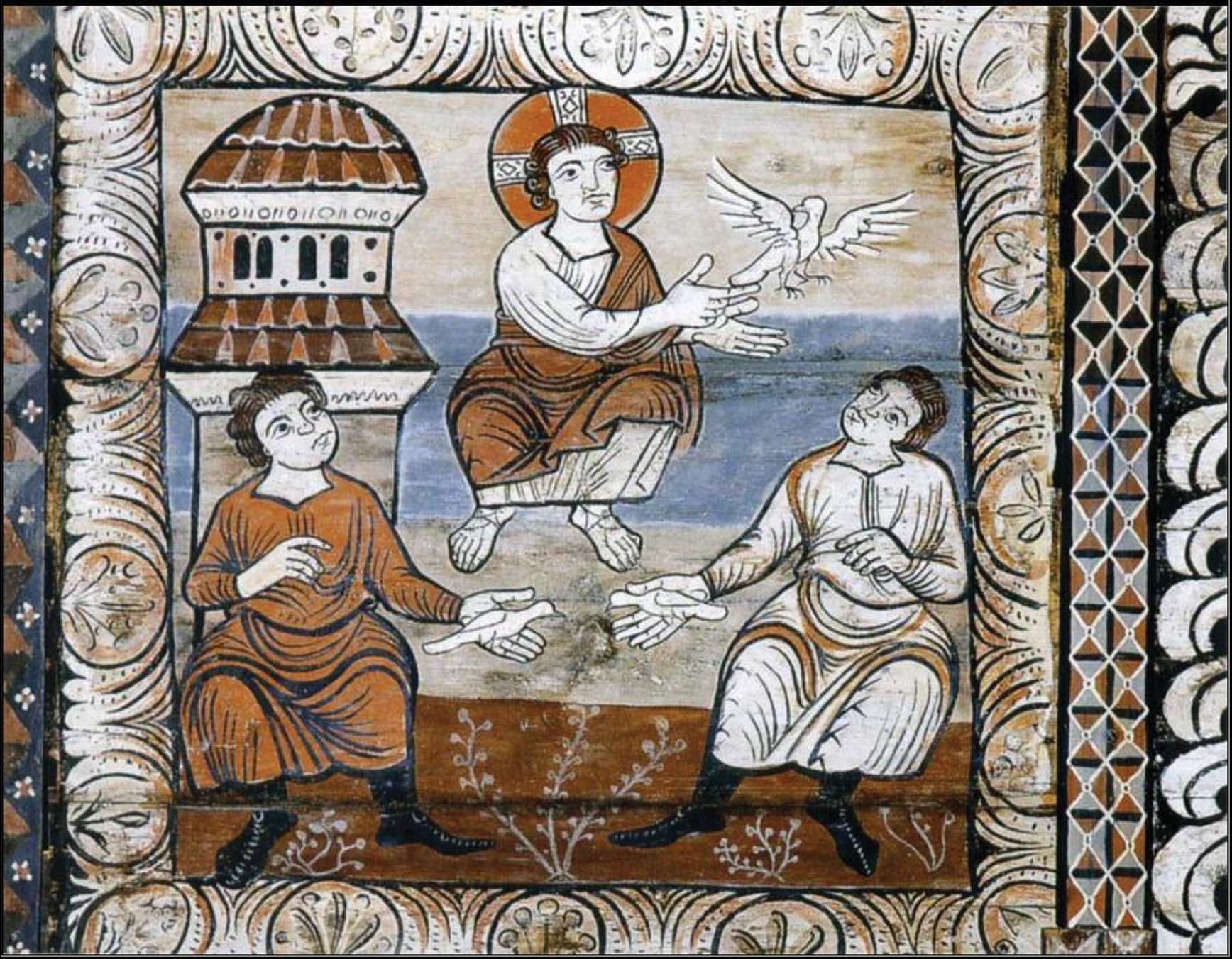Who Is Jesus?
Lesson Seven

Who Is Jesus According to the Non-canonical Gospels?
Oh the Internet. So many wonderful opportunities to unearth treasures! One treasure that brought a smile I happened upon while visiting Pinterest. See if this brings a smile to you:
In a child’s handwriting:
Dear God,
Mommy says all babies cry. But I don’t think Jesus did. You must [k]now the answer, so please write back. We have a bet.
Angelina
I love this note! Any adult who has spent more than a few minutes with a young person (or can remember one’s own early days) often encounters stories and questions from children as they try to decipher the world and the world of faith. For example, when I was about five, I visited a Roman Catholic church with a friend’s family. I still vividly recall that the lofty ceiling of the church was painted the most amazing, celestial blue; golden vessels and amazing stained glass windows also graced this astonishing holy space. I was, at five, perfectly awestruck. By comparison, my church was plain—white walls, pastel-hued windows (no stained glass), a large wooden cross, and unadorned wooden pews. Having been told that the church was God’s house, I remember being very unsettled that God decorated God’s other house (that is, not the one we visited every week) with such beautiful things. I had never been in such a building. In my young mind I truly believed that church furnishings were carefully selected by God; indeed, that the signs and windows were supernaturally made and installed.
As I read this lesson about the non-canonical gospels, and later viewed the Companion DVD*, I found myself truly empathizing with Christians of and from every age who try to make sense of Christianity by pondering the gaps in the Christian story and the life of Christ. In our age of abundant and readily available information, we can easily unearth papers and tomes and sermons and studies about the Christian story and the life of Christ. But let’s face it. Libraries may brim with books and monographs and scholarly articles, but during sleepless nights and maddening commutes, who doesn’t ponder great truths on her or his own? Sometimes I drift from what I (think I) know in the canon and ponder the gaps. Did Jesus enjoy the craft of carpentry? Did he ever suffer from an illness? I am not alone in these imaginings. In the study, in the section about the infancy gospels of Jesus, Judy writes, “However unusual we find these stories, we recognize that the gist of this infancy gospel [the Infancy Gospel of Thomas] is to affirm the power, wisdom, and divine blessings of Jesus—even in his boyhood” (page 72).
I didn’t fully grasp until I read this lesson that the canon as we know it came together not over decades but centuries. Judy writes, “For the first two centuries, it seemed to matter little whether there were lines drawn around the material that was authoritative and the material that was not” (page 70). For humans, stories matter. That’s why, I think, the Christian community eventually had to codify, if you will, our common faith story as this would link us, one to another, over generations. In this new century, we, through a shared canon, grapple with and continue to be sustained by these same texts. Modern readers like me are indebted to all who undertook this massive undertaking. Vincent Branick wrote: “Carrying your Bible under your arm implies being inserted into a tradition and a network that ties us to the earliest Christian communities selecting the books of the Bible, the bleary-eyed copyists passing the books on, and the community of faith today reading and celebrating these texts.” (Vincent Branick, Understanding the New Testament and Its Message: An Introduction, Paulist Press, 1998, p. 33)
How do we know what we know about Jesus? As a child, I relied on sensations like sight and sound and kindly Sunday school teachers to help me make sense of faith. As an adult, I still use my senses to broaden my experience of faith, but with my years, I can now rely on scripture and community (and well as scholarly pursuits such as studying church architecture) to understand. But even with an authoritative canon, our experience of scripture and lives of faith are not static or monolithic. Church historian Elaine Pagels puts it like this at the conclusion of her book about the non-canonical gospel of Thomas: “What I have come to love in the wealth and diversity of our religious traditions—and the communities that sustain them—is that they offer the testimony of innumerable people to spiritual discovery. Thus they encourage those who endeavor, in Jesus’ words, to ‘seek, and you shall find.’” (Elaine Pagels, Beyond Belief: The Secret Gospel of Thomas, Random House, 2003, p. 185).
As I conclude this blog, I wish to lift up the opening prayer (found on page 68):
O God, enable us to marvel at all who have traveled before us, seeking your face, longing to understand. May we discover the joys of being in the company of those who wish to know you, and may we greet others with humility. We are all on a journey. Walk with us, we pray. Amen.
*The Who Is Jesus? Companion DVD is on sale until April 15th! Order your copy from PDS and save 25%! Order item #HZN16103 from PDS by calling toll free 800/524-2612 or online at presbyterianwomen.org/shop.
Other editions on sale include the English edition (HZN16100, now $6), Spanish edition (HZN16110, now $6), ecumenical edition (HZN16102, now $6) and large-print edition (HZN16150, now $9).
Carissa Herold
